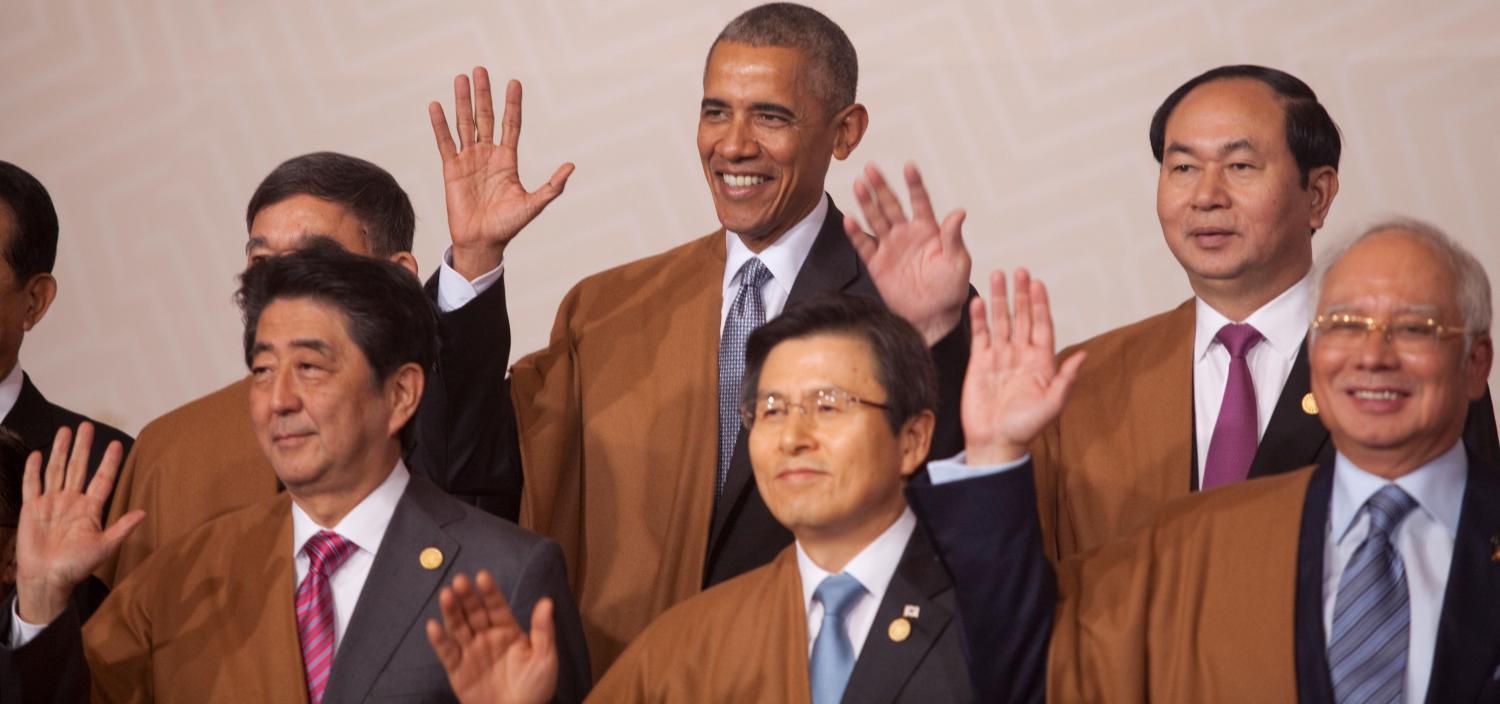Even though it is the region’s second oldest multilateral mechanism, APEC continues to find relevance hard to come by. Best known for the photo taken at the annual leaders’ summit at which said leaders bond over the humiliation of donning often garish 'national attire', this grouping has never quite found its feet. Created in 1989 to spur trade liberalisation across the Pacific, the forum has never delivered on its potential.
And its latest Leaders’ Summit, held for the second time in eight years in Peru, shows the problems continue. At first glance things may be looking up, it issued a 4000 word Leaders’ Declaration and an annex that tempted with the prospect of the Free Trade Agreement of the Asia-Pacific (FTAAP). But longwinded declarations reflect an absence of consensus; the veneer of cooperation rather than its substance. FTAAP remains elusive and the Bogor goals of achieving free trade by 2020 are fanciful. Of APEC’s problems I want to focus on four specific challenges evident at the Lima meeting.
A platform for whom?
APEC’s original model of trade liberalisation, known as open regionalism, was a non-binding approach to reducing tariffs and other barriers. In contrast to the WTO model, in which agreements are slow to cement but then locked in, APEC sought to act as a free trade cheerleader; it encourages openness to trade but membership is obligation-free. Unsurprisingly, this approach has gone nowhere. The region’s key economies have embraced preferential approaches, signing a slew of trade agreements in the last decade. Consequently, APEC has become known as a regular meeting of key economies who would discuss and indeed negotiate non-APEC agreements at the conclave. Many a TPP-meeting and announceable occurred at an APEC gathering. This year Lima continued this not especially proud tradition. Over the last few days, key members have sought to figure out whether the moribund TPP is in fact dead or if some kind of heroic resurrection is possible. RCEP, the ASEAN-centred and China-championed, agreement was another focal point, again underlining APEC’s irrelevance in the area of policy that is ostensibly its core purview. The Leaders’ Declaration Annexe even acknowledges that FTAAP, which has been an APEC-centred trade dream for some time, is going to occur outside of this forum. APEC is plainly a useful platform for bringing countries together but in so doing it undermines its own utility.
A glimmer of Chinese leadership
This Leaders' meeting occurred in the shadow of the US election which had, even more than usual, been played out in economically protectionist terms. This led to the exquisite situation in which China styled itself as a defender of economic liberalism in uncertain times. More specifically, China used APEC to push for a rapid conclusion of its rather underwhelming RCEP which may yet be concluded within 12 months. Even if it is, by all accounts it will be a very low-standard agreement that will be unlikely to generate significant reductions in barriers across the region. Thus, a perception that this was Chinese leadership of trade liberalisation on display would be premature. Former head of PM &C Michael Thawley pointedly observed in mid-2015 that China could not and would not lead in the provision of international public goods. Lima shows that it has the potential to do so but that it is not yet there. One gets the sense that this was a testing of the waters rather than a significant break with past behaviour.
Liberalisation in protectionist times
The liberal democratic world has been rattled by the return of nativist nationalism and protectionist impulses. Brexit, Trump and the growing share of votes garnered by populist outsider parties across the democratic world has shown that the long-latent social dislocation caused by globalisation is finally having meaningful political consequences. The APEC meeting was shaken by this but the manner in which the organisation responded was underwhelming. Bromides about inclusivity and talking points about aggregate GDP growth and social harmony reveal that the organisation and the leaders of its member nations still have no real sense of how to speak to those alienated groups. APEC's ability to advance the message that openness benefits everyone seems as weak as the its potential to increase economic integration.
Waiting for Trump
Of course the most important issue at the meeting was the shadow of Donald Trump. Scepticism about trade liberalisation was a core part of Trump’s unconventional path to the White House. And flexibility with the truth is part of his political modus operandi. This has led to high level of uncertainty about what direction the US - historically one of APEC’s most important champions - will take. Add to that the uncertainty about whether Trump will make good on his threatened economic warfare with China and it's clear there is an unprecedented level of unpredictability about the region’s economic future. It is not surprising therefore that most of the 'sideline' meetings held at the summit entailed detailed prognostication about what Trump’s election will mean.
Last time they were in Peru, leaders were forced into ponchos for their photo shoot. Stung by the resulting criticism, organizers this time compromised and had leaders photographed in business attire supplemented somewhat oddly by a vicuna shawl over one shoulder. The leaders' visible discomfort was not only sartorial. Vicuna is the most expensive fabric on the planet and a prized material for the super wealthy. In times of populism in which those left out of globalisation’s opportunities are punishing the establishment at the ballot box, a clumsier statement about APEC and its priorities would be hard to find.
Prior to APEC 2007 Malcolm Cook and Allan Gyngell famously said that without making key changes the grouping risked becoming a 'living dead' international institution. Sadly, Lima represents another stagger along the path to membership of that zombie army.

